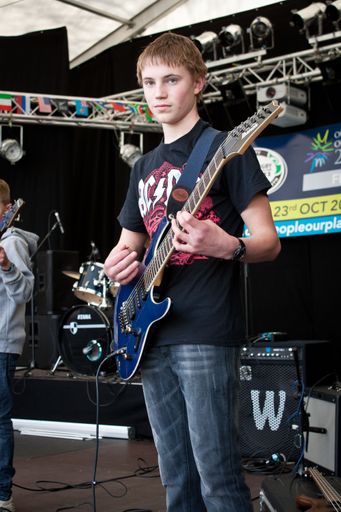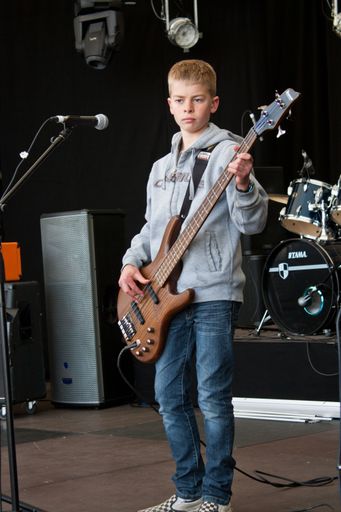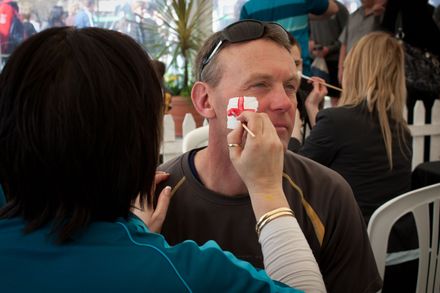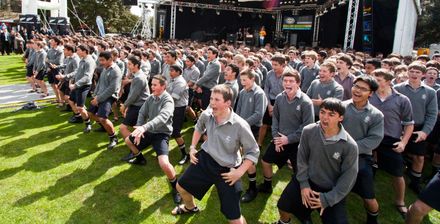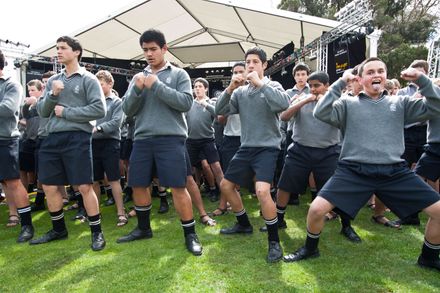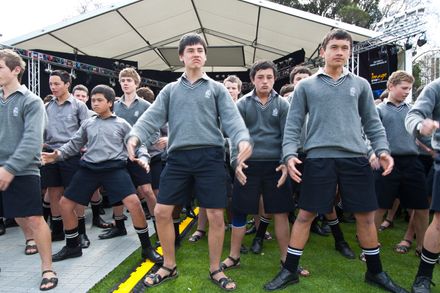Rippa Rugby - Our People, Our Place Festival
This early morning game of ‘Rippa Rugby’ in Te Marae o Hine – The Square was played by local school children who donned the colours of Romania and Georgia. These countries played their Rugby World Cup 2011 game at Palmerston North’s Arena later that night. The game attracted media interest, with TV One news reporters Tamati Coffey and Petra Bagust in attendance.
Captaining the kids of the Romanian team was Palmerston North Mayor Jono Naylor, while the kids representing Georgia were captained by Manawatū Mayor Ian McKelvie. The Referee was local All Black Aaron Cruden and attending legends of the game included Nevan MacEwen and Sam Strahan.
‘Romanian’ team:
Van Prenter, Scott Anderson, Caleb Martin, Cooper Ryder, Caleb Satterthwaite, Ryan Satterthwaite, Alexi Vertongen, Tipene Norman, Fergus Sutherland, Charlie Yorke, Jeremy Newland, Harrison Cunningham and Cooper Furnell.
‘Georgian’ team:
Madison Courtney, Kayla Bevan, Ryan Gleeson, Harrison Booth, Jak Campbell-Meads, Zavier Pakau-Timoti, Matua Pomare, Korey Satterthwaite, Ruairidh Sutherland, Isaac Newland, Jack Hughes-Long, Tom Grieg and Jaedyn Bevan.
Rippa Rugby is the non-contact version of the game designed to encourage young children to learn basic skills and pick up an enjoyment of the game.
The ‘Our People, Our Place’ Festival was a pan-regional organisational effort across hospitality, local government, business and other organisations to ensure a wealth of activities were on offer for tourists and visitors travelling for the 2011 Rugby World Cup.








































